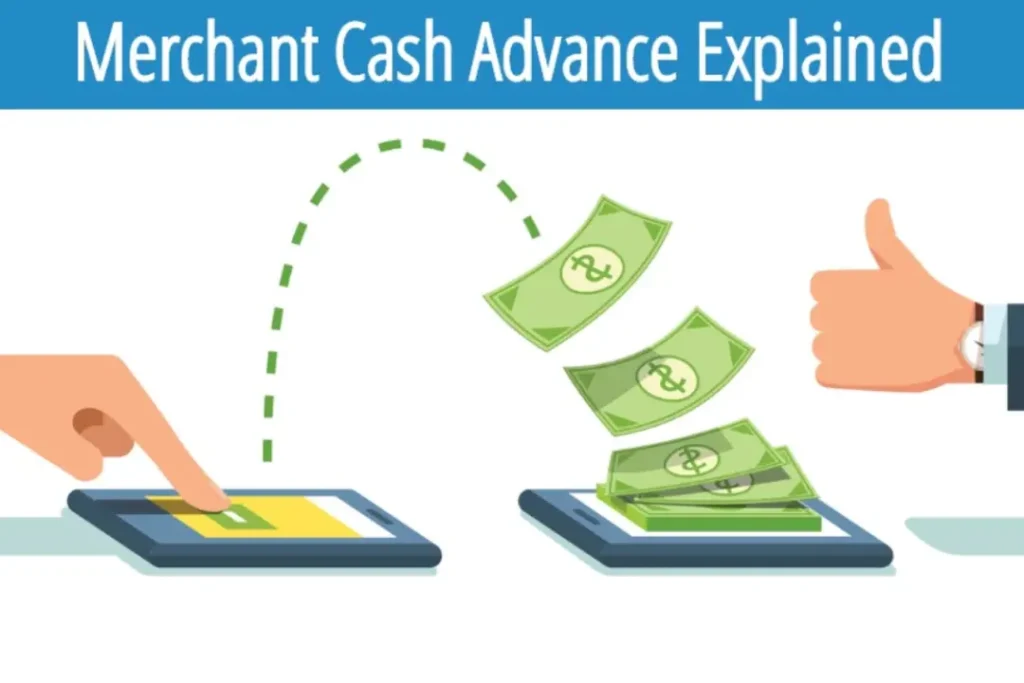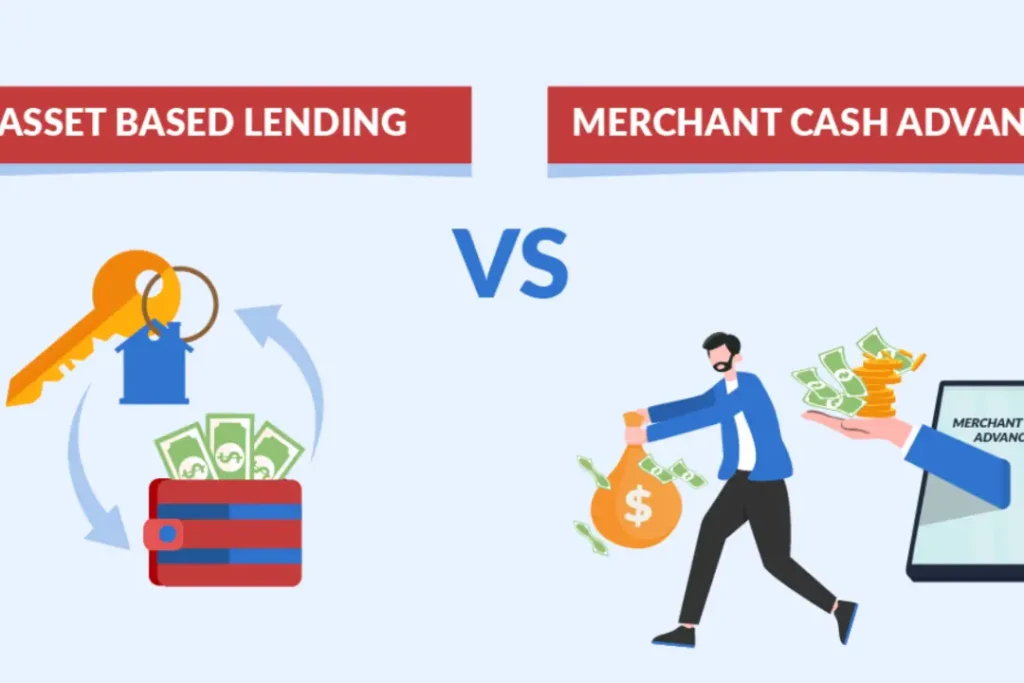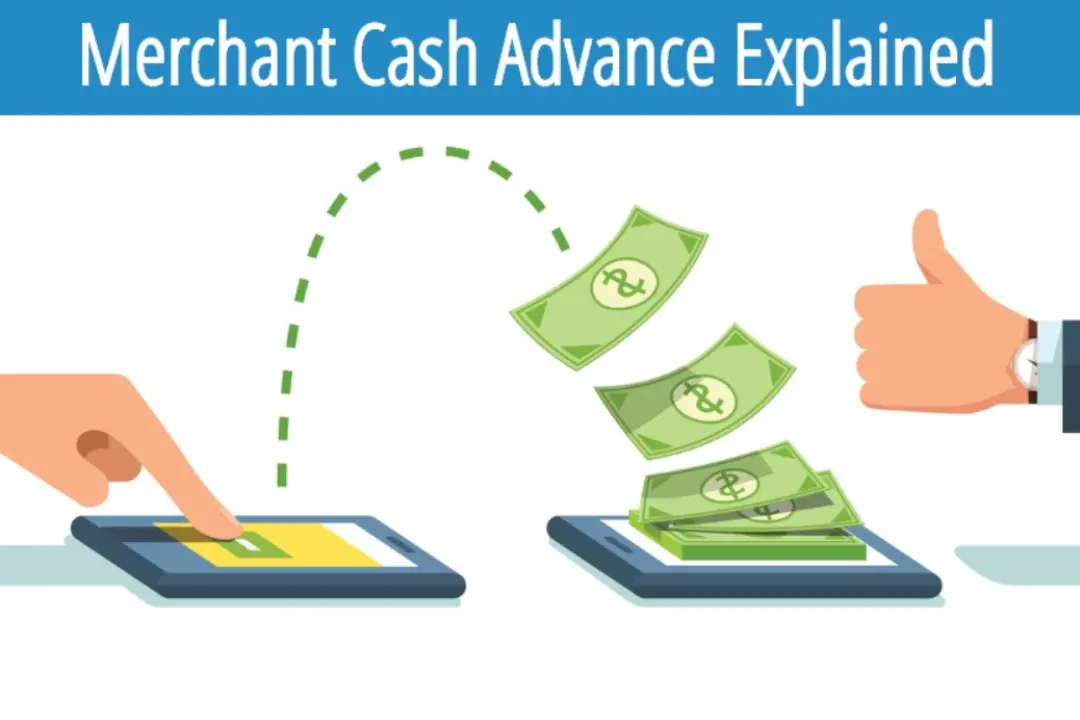Introduction to Merchant Cash Advances (MCA)
Do you ever wonder how small businesses can raise cash at their dire moments? The most common way they do this is through a Merchant Cash Advance (MCA). Different from ordinary loans, an MCA enables firms to access funds quickly and easily by anticipating future sales. It is especially good where your business has high sales but needs money before those sales are paid. This is not traditional lending; it’s more like trading tomorrow’s revenues for today’s loans.

What Is a Merchant Cash Advance?
Businesses get saved by a Merchant Cash Advance which offers them finances upfront that can be recovered from its future earnings. How it differs from normal loans – instead of an installment plan on the loan taken, an MCA will pay you back through a percentage of daily or weekly revenue. For companies that have varying sale quantities, this type of payment schedule provides them with the flexibility they require. It eases whenever income fluctuates.
How Does an MCA Work?
Let us say as an example that a company usually makes $10,000 in monthly revenue; let us delve into it: if they need immediate cash to restock merchandise or fix crucial equipment, for instance, the provider of MCAs might advance them about $9000. In turn, the company repays part of its daily earnings until all terms associated with that progress have been met totaling approximately $10,000 in most cases. This means firms can get timely support without being burdened by fixed repayment terms during their peak periods.
What Is an MCA Lender Buying?
In essence, when one lends out MCA he or she buys into some fraction of projected receipts for that business. These lenders don’t just give out money but invest in these kinds of enterprises’ future well-being as well. Thus there is also an expectation that not only will the firm survive but also generate enough sales to satisfy both parties to that advance agreement.
Benefits of Using Merchant Cash Advance Solutions
MCAs have several benefits:
- Speed: The application process is fast and money often comes much quicker than in traditional lending.
- No Credit Checks: It’s a relief for businesses that are still developing credit histories that many MCA providers don’t demand a perfect credit score.
- Flexibility: Payments adjust based on sales volume, which is particularly advantageous during slower business periods. When sales are up, the advance gets paid off faster; if they decrease so does the amount paid.
Untangling the Application Process for Merchant Cash Advances
The process of applying for a Merchant Cash Advance (MCA) is typically less complicated than trying to get loans from traditional financial institutions. To be considered eligible, firms need to show that they have an income. Companies must provide detailed sales reports and bank statements reflecting their revenue streams. Additionally, details such as how long the business has been in existence and whether it operates online or offline as well as which industry sector it aligns with may also be required by MCA lenders. They utilize this information to assess the operating performance and growth potential.
Applying for Merchant Cash Advances at Blursoft
The process for getting an MCA from Blursoft is easy and effective:
- Visit Blursoft’s Website: Go to where applications are done on their official site to begin.
- Loan Application: You are supposed to prove you are who you claim by submitting monthly turnover details, some personal data, and background about your firm among other things.
- Paper Man: Those would include papers showing recent bank statements indicating your income from sales as well as any previous tax declarations related to what forms part of your ongoing business summarized in sales reports.
- Application Reviewing and Submission: Do not forget to double-check every detail entered while making an application through Blursoft’s secure system.
- Fast Verdicts: The time spent processing requests at Blursoft is worth telling stories about because they will always review your request fast enough and respond sometimes in just a few days.
- Upon approval which could take less than 24 hours, the funds become available immediately because they are transferred directly into the merchant’s bank account.
This efficiency makes it attractive especially where funding applications come with long delays experienced almost everywhere else that can slow down cash inflows urgently needed by organizations.
Key Issues When Choosing a Merchant Cash Advance Provider
Selecting the right MCA provider is like getting a strategic partner for the business; given below are some important things to remember:

- Reliability: Check what other companies say about them, and whether they listen to and resolve consumer complaints.
- Transparency: A business must tell all details of an advance including factor rate, payback percentage, and any extra costs that may be incurred so that merchants do not have to guess.
Sales Support Service: Good providers offer robust customer support. Whenever questions arise during the application process there should always be someone who can answer them.
How Blursoft Merchant Cash Advances are Different From Other Lenders
Blursoft has designed its services in such a way as to make them accessible and simple at the same time. They particularly serve small firms that have bad credit scores hence unable to qualify for normal bank financing. Some unique features of Blursoft include:
Approval Instantaneously
Fast service is what they mainly concentrate on taking into account that businesses applying for MCAs usually have a shortage of time.
Easy Qualification
Unlike conventional loan lending institutions, Blursoft boasts higher acceptance ratios and focuses more on sales performance rather than factors such as credit ratings.
Customer-Focused Strategies
The upgrades by Blursoft are customizable to fit a wide range of business capabilities and requirements, thus securing payment terms for cash flows.
Fee Structure in MCA
However, it is important to note that even though MCAs provide accessibility they have some costs associated with them:
- The Company’s Cash Flow: MCA companies do not charge interest on loans but instead factor in rates from 1.1 upwards to 1.5 times the amount borrowed as against normal interest on loans.
Recovery Rates: The retrieval rate is the percentage of daily or weekly sales that will be taken by the lender. Do not allow these rates to hinder today’s profit margins causing cash flow problems tomorrow.
MCA Pros and Cons
Pros:
- Quick Cash: MCA access is like an x-marks-the-spot moment during times of great need. They are designed to offer quick funding, frequently making cash available within days after approvals. The rate of turnaround is vital when there’s a pressing issue in business.
- Easy Yes: MCAs often ease their approval criteria compared to what would be the case for normal loans. Providers typically focus on current and projected sales rather than credit history thus making it easier for businesses with less-than-perfect credit to get funding.
Cons:
- Costly: Convenient albeit pricey among other financing alternatives, MCAs impose a premium for fast relief.
- Daily Payments: MCA repayment is anchored on daily sales, meaning that part of every day’s earnings has to be remitted towards servicing the MCA provider. This can negatively impact liquidity, particularly during off-peak periods.
Who an MCA Is Best For
MCAs are ideal for enterprises with high daily or weekly sales but experience cash flow gaps. It might be seasonal stores, restaurants, or any other type of business where payroll needs to be managed or inventory purchases necessitated by unexpected costs where convenience and speed provided by MCAs can be beneficial. For businesses with volatile revenue streams or those looking for cheaper sources of finance, it would make sense to look elsewhere.
Conclusion
An MCA should be likened to choosing the right tool for a particular task. An MCA could be a formidable resource if your organization has high daily transactions and requires quick access to funds that can enable it to utilize growth opportunities or manage unforeseen expenses. However, it will be important to evaluate costs versus benefits to ensure that it is indeed a prudent financial move given current circumstances and future stability.

